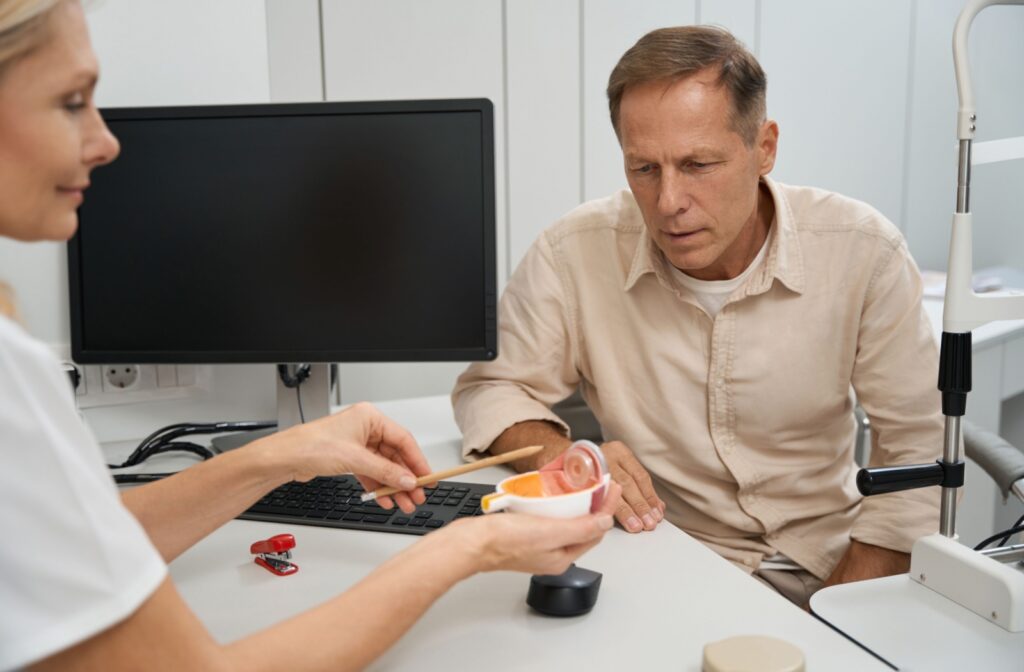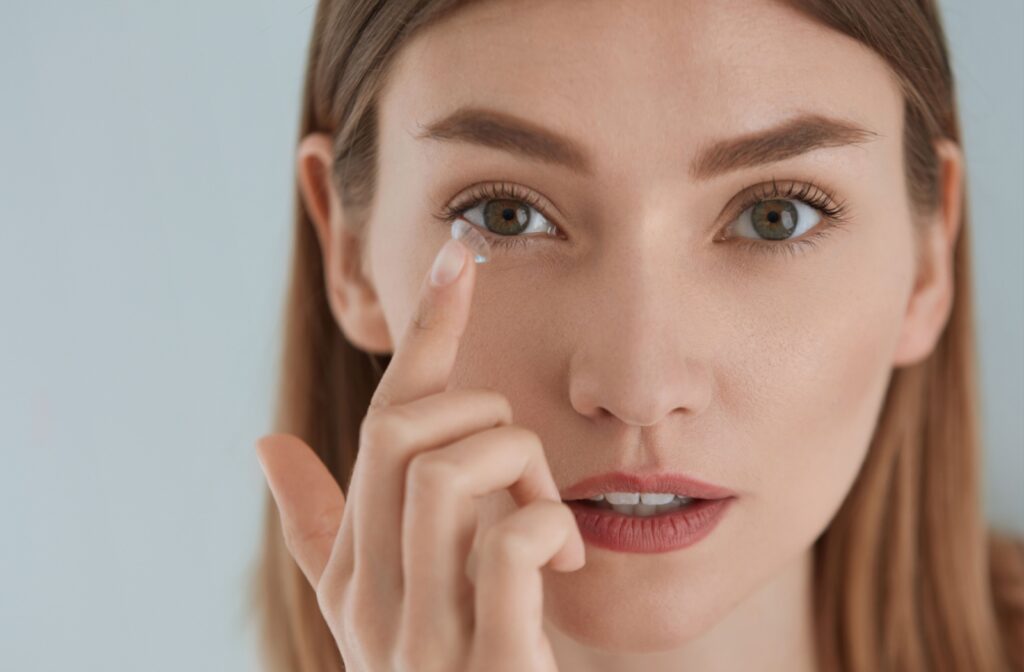We typically visit our eye doctor for one of two reasons: either we’re experiencing ongoing irritation, or we need to order another supply of contact lenses.
Sometimes, these reasons combine and we feel as though our eyes are dry and irritated while we’re wearing our contact lenses. This is a common concern, as contacts can exacerbate dry eye symptoms.
Despite the challenges associated with wearing contacts incompatible with dry eyes, individuals can continue to wear soft contact lenses while managing their dry eye symptoms.
Daily disposable lenses are a great option for individuals experiencing moderate dryness. A fresh new lens is worn every time, eliminating the need for cleaning and storage, and encouraging the wearer to take breaks between wear-time.
Understanding Dry Eye Disease
Dry eye disease is one of the most common eye conditions affecting everyday Americans. It occurs when the eye doesn’t produce enough tears or when tears evaporate too quickly from the eye’s surface because of an unstable tear film.
There are two main types of dry eye, each having their own distinct causes:
- Aqueous Tear-Deficient Dry Eye: Caused by inadequate production of the watery component of tears by the lacrimal glands, this condition arises when the eye doesn’t produce enough tears to properly hydrate the eye’s surface.
- Evaporative Dry Eye: Caused by an instability in the tear film, often due to the dysfunction of meibomian glands in the eyelids. The mebomian glands produce the oily component of tears. When they become inflamed or blocked, the lack of a proper lipid layer allows tears to evaporate quickly from the eye’s surface.
Regardless of what form of dry eye you may have, symptoms often include:
- Redness
- Blurry vision
- Light sensitivity
- Eye fatigue
- Burning or stinging
- Watery eyes
While dry eye cannot be cured, its symptoms can be effectively managed. Understanding its common causes helps identify the most suitable treatment, These causes include:
- Aging, as tear production naturally decreases as we grow older.
- Certain medical conditions and medications.
- Environmental conditions like dry, windy, or chilly climates, which can exacerbate ongoing dryness.
- Improper contact lens wear and care, including overwearing lenses.

The Link Between Contacts & Dry Eyes
The link between contacts and dry eyes is such that contacts can exacerbate symptoms of dry eye disease.
Contacts act as a barrier on the eye’s surface, as they sit directly on the cornea. They can absorb tears from the eye’s surface, leaving even fewer tears to naturally lubricate the eyes, resulting in increased friction between the lens and the eye.
Contacts can reduce the amount of oxygen that reaches the cornea, further contributing to the sensation of dryness. The material and fit of the lens can also play a role. Some lenses are made from materials that may not effectively retain moisture, leading to increased evaporation of tears.
Environmental factors such as prolonged screen time or being in a dry, air-conditioned room can further exacerbate these issues, making dry eye symptoms more pronounced for contact lens wearers.
Ultimately, while contact lenses offer convenience and improved vision, they can pose challenges for those with dry eyes by interfering with the natural lubrication of the eyes, reducing tear production and increasing evaporation.
Despite these concerns, individuals can continue to wear contact lenses. The trick is finding the lens option that’s most suitable for your ocular needs while managing dry eye symptoms.
Scleral contact lenses are recommended for those with severe dry eyes, but soft contact lenses made from silicone hydrogel are great if your dry eyes aren’t as severe. These lenses allow better oxygen permeability, keeping the eyes healthier and improving comfort.
Also consider switching to daily disposable lenses. These lenses are discarded after a single use, reducing the risk of allergen and bacteria accumulation on the lens, which can irritate already sensitive eyes. This eliminates the need for cleaning and replacing the lens, encouraging the wearer to take breaks in between wears.
If daily lenses aren’t suitable for you, extended-wear lenses are fine. Just remember to be diligent in their cleaning and care and follow their replacement schedule.
Dry Eye Management & Prevention
If you are a contact lens wearer, these strategies are safe to use alongside your lenses. Remember to be diligent in your contact lens wear, care, and replacement schedule.
- Humidifier: Use a humidifier in your space to maintain optimal humidity levels to prevent excessive dryness in the air that can affect your eyes.
- Stay Hydrated: Drink plenty of water throughout the day to promote overall hydration. Aim to drink about 8 to 10 glasses of water a day!
- Artificial Tears: One of the most popular over-the-counter solutions, these drops mimic the natural composition of tears to provide adequate hydration to the eye’s surface. Look for artificial tears that are preservative-free and compatible with contact lenses so that your drops maintain their ongoing benefits throughout the day.
- Eye Ointment: Applying an eye ointment to the lashline before bed to help retain moisture and prevent dryness throughout the night. Be sure to remove your contacts before applying this ointment.
- Warm Compress Mask: Using a warm compress mask over your eyes and gently massaging around the area for a few minutes helps unclog any oil glands along the eyelids needed for adequate tear secretion. Make sure you remove your contacts before using this treatment option.
- Limit Screen Time: Minimize screen time and take adequate breaks between periods of work to reduce eye strain and potential dryness caused by prolonged exposure to digital devices.
If these management options don’t provide enough relief from dry eye symptoms it may be time to consider advanced therapy options.
Schedule a Visit
Connect with our team at Restore Vision Center to schedule an appointment for your dry eye treatment.
At your consultation, your optometrist will assess the severity of your dryness, examine your tear film, and develop a treatment plan tailored to your specific ocular needs to provide lasting comfort from dry eye symptoms.




